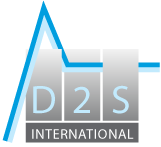TURNOUTS
New Concepts for Turnouts in Urban Rail Transit Infrastructures
The word ‘turnout’ describes the junction in track work where lines diverge or converge. Although a turnout consists of several components, this project focuses on the most expensive component: the frog. The frog is the section of the turnout that enables the wheel that is running on one rail to literally cross over another rail.
The TURNOUTS project considers the following types of frogs: cast manganese, welded, moveable nose, flange bearing and deep groove. It focuses on the design and manufacture of new turnout concepts for rail infrastructure. Project partners include the main European turnout manufacturers as well as research and engineering organisations, one contractor and three end users.
Contract: TST3-CT-2003-505592
Acronym: TURNOUTS
Full title: New concepts for turnouts in urban rail transit infrastructures
Project Co-ordinator: D2S International, Heverlee (BE)
Starting date: November 1, 2003
Duration (in months): 39
Budget: € 3,950,916.00
EC contribution: € 2,169,561.00
Objectives
The objective of this project is to improve the vehicle-track interaction of turnout systems as used in urban rail transit, and therefore improve their efficiency, enhance their safety levels, reduce their maintenance costs, increase their life expectancy and restrain the emitted noise.
Description of work
The TURNOUTS project started with the modelling of actual turnouts to provide the benchmarks against which the improvements were to be measured. Design changes were implemented in the models to predict their behaviour. The turnouts were manufactured and installed for validation purposes and measurements were performed to confirm the predictions from the models. The end result was a series of turnouts with improved characteristics.
The project is divided into several work packages (WP):
WP1: Six different existing turnout systems representing the conventional turnouts used today were measured and modelled. The models were optimised to reflect the actual measurement results. Improvements and changes were made to these turnouts. The models were than used to optimise the proposed changes.
WP2: A large number of potential measures to reduce impact forces was defined. Conceptual design studies were made for some of these designs.
WP3: Seven test sites were selected within the networks of the participating operators and the most optimal design for each particular location was developed.
WP4: The most optimal designs included the use of new materials, new manufacturing techniques and new installation techniques. The selected designs were manufactured and tested in the lab.
WP5: After installation, the performance of the designs was tested and compared against the calculated results.
WP6: The results of the new designs were used to develop conclusions about the benefits of various designs.
Results
The project focused on design and manufacture of new construction concepts of special track work for rail infrastructure that are low maintenance, high quality, safer, risk mitigating and produce lower noise. Complete turnouts were considered in the research project (frog and switch area) with the exclusion of the control systems.
Two different modelling procedures for impact force calculation during vehicle running in turnouts were compared for their performance and validated. A first comparison was made comparing measurement and modelling results on a reference turnout. Further refinement was made by updating modelling results by means of measurement results on six different turnout systems, which are representative for the conventional turnouts used today in urban rail transport networks (WP1).
A large number of potential design measures for reducing impact forces was defined. A conceptual design study of these design measures was made (WP2).
In the second phase of the project, seven test sites were selected (three end users) and for each test site the most optimal new turnout design was developed (iterative procedure in terms of refining selected turnout or in terms of selection a new turnout design) (WP3).
The newly developed turnout systems were manufactured (WP4), tested in the lab and installed on site. This included the use of new materials, new manufacturing techniques and new installation techniques. Their performance was measured and compared against the calculated results (WP5).
At the end of the project, conclusions were drawn in WP6.
